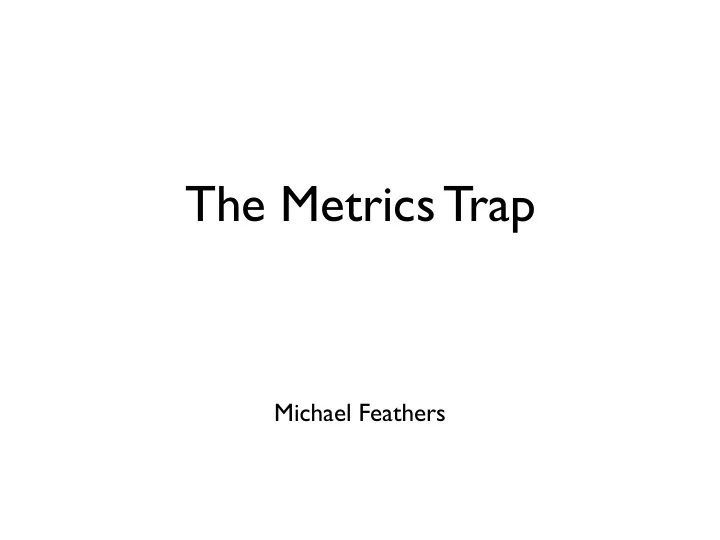

The Metrics Trap Michael Feathers
We all know fold
foldl1 (+) [1..5]
foldl1 (+) [1..5] 15
We all know Average
data Pair = Pair !Int !Double average :: Vector Double -> Double average xs = s / fromIntegral n where Pair n s = foldl' k (Pair 0 0) xs k (Pair n s) x = Pair (n+1) (s+x)
data Pair = Pair !Int !Double average :: Vector Double -> Double average xs = s / fromIntegral n where Pair n s = foldl' k (Pair 0 0) xs k (Pair n s) x = Pair (n+1) (s+x)
Standard ways of reducing information
(average [1, 1, 1, 1, 1, 1]) == (average [11, -9, 12, -10])
It turns out that we do this all the time
Quantitative Bias In every use of units, there’s an assumption of uniformity
Quantitative Bias In every use of units, there’s an assumption of uniformity 1 can be exchanged for 1
“We want to establish key metrics and indicators to measure our progress toward the goal.”
“We want to establish key metrics and indicators to measure our progress toward the goal.”
But..
We don’t have (m)any uniform distributions in software
Distortion via Metrics
There is no “right” number for method size , class size , amount of complexity , etc
Why do we persist in our reductionism?
Maybe it is because we can’t think of anything better
“We want to establish key metrics and indicators to measure our progress toward the goal.”
“Laws” of Metrics
“Laws” of Metrics 1. Distance Causes Misunderstanding
“Laws” of Metrics 1. Distance Causes Misunderstanding 2. Highlighting Leads to Focus
“Laws” of Metrics 1. Distance Causes Misunderstanding 2. Highlighting Leads to Focus 3. Focus Leads to Action
“Laws” of Metrics 1. Distance Causes Misunderstanding 2. Highlighting Leads to Focus 3. Focus Leads to Action 4. Focus Leads to Side-Effects
Death of Locality
Practice Use Qualitative “Measures” when Possible
Practice Silent Alarms
Silent Alarms Don’t have check-in gates. Let people make mistakes. Investigate the mistakes off-line and see why they happened. Then, intervene
Practice Disposable Metrics
Disposable Metrics Secondary effects are less likely when metrics come and go. Use them to highlight concerns
Practice Targeted Metrics
Targeted Metric - Feature Trend Cards Hypothesize a couple of features that you will never add to your code. Task them and estimate them periodically. See the debt trend for areas they touch.
Practice Deluge with Metrics
Deluge The more metrics you have, the harder it is to take any one of them too seriously. They become “vital signs” and indicators as we have in medicine.
Temporal Correlation of Class Changes
Active Set of Classes
Active Set of Classes
Active Set of Classes
Vital Signs
Reduction is the Enemy
Recommend
More recommend